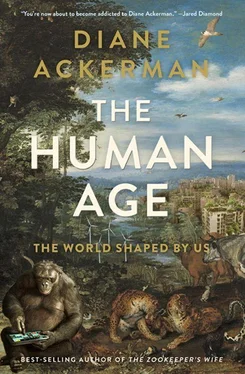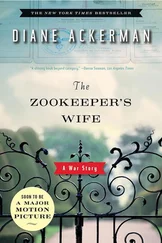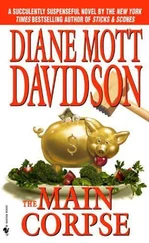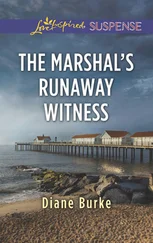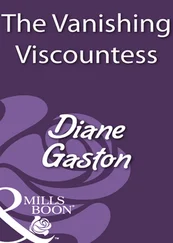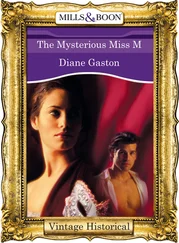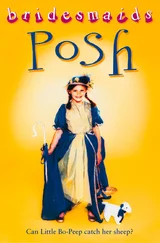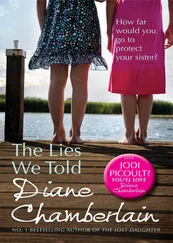“This is Mookie ,” he says, as we pull up to his cobalt-blue fishing boat with a sky-blue cabin door and a white deck sole that must once have matched. Thanks to the rubbing of boots, cages, ropes, and splintery dock, a trifle of paint has worn away to reveal a thin deckle-edge of sky blue.
We climb aboard, hoist anchor, and chug to his patch of ocean, a flowing field dark as gravy. Small gobs of sea spit trail the boat. Gray-and-white herring gulls spiral above, following us as they would any large predator, their yellow eyes hunting for small fish churned up to the surface.
Dropping anchor, we winch up a heavy cage and swing it carefully onto a built-in wooden bench. The cold breeze, snorting and blowing, is full of turning knives. I’m glad of the heavy worksuit, but it’s cumbersome and my movements feel moonwalk slow.
Bren pops the lid to reveal a vault of about three hundred oysters and a mix of sea creatures, including starfish, small fronds of orange algae, and a necklace of round off-white periwinkle egg capsules that look like buttons of horn or coral.
“Look at this,” he says, slicing an egg open with his teeth and extracting tiny seeds on the tip of a knife blade. “They’re snail eggs, and they actually look like miniature snails.”
Amazingly, they do. Periwinkles, flavorful sea snails, have been part of English, Irish, Asian, and African cuisine for millennia. Clinging to rocks (or oyster cages) to steady themselves, they feed on phytoplankton. But these freeloaders aren’t welcome among the oysters. Nor is the squishy round sea squirt, or the translucent segmented mantis shrimp, or the cascade of olive-green sea grapes, or the broken shells. Back they all return to the sea, except for the mass of tiny open-jawed barnacles encrusting the mesh cages. Those have mortared themselves in place and will have to wait to sink with the oysters.
Gulls swim through the sky as we pour the oysters into shallow bins on a wooden table. Our job today is to “rough up” the oysters—not injure, but stress them so that they’ll form tougher shells. Much as muscles build if you exercise them, oysters thicken their shells when tossed by the tide. Idle oysters need exercise, just as idle humans do. Without struggle, strength won’t grow. The human parallel plays with my mind; then the cold blows the thought away, and I reach for a pair of rubber gloves.
“Knead them like bread,” Bren says, showing me how.
Catching a dozen or so in my open fingers, I roll them forward with the base of my palms, then claw them back gently and repeat the undulating motion. I have become the tide.
“We touch them every five weeks,” he explains, “to make sure they’ll grow strong.”
“It sounds like you feel pretty close to them.”
“They’re like family. I plant them, I’m with them for two years, watch them grow, touch them regularly. I know every oyster personally.”
“By name?”
He laughs. “Not quite. Not yet .”
“They’re really beautiful.” I pause to pick up one of the Thimble Island Salts and look at its deeply cupped shell and golden hue, purple patches, iridescent luster. Some resemble a bony hand, others a craggy mountain range.
When Bren opens one with a knife and offers it to me, I can’t refuse. Oyster-proud, he waits for my response. Not an oyster connoisseur, I just let my taste buds speak: “Incredibly salty, silky, smooth, plump as a mitten. It tastes like a bite of ocean.”
A Proustian memory transports me to the coast of Brittany, in the shadow of Mont Saint-Michel, where people also harvest the sea. There are huge tides there, and the water is very saline—perfect conditions for raising oysters, one of the great delicacies of Brittany. I remember them tasting salty, too, but different, slightly metallic with a whisper of tea and brass. Michel de Montaigne thought oysters tasted like violets. But the flavor of oysters varies depending on their environment, and I’ve read of some that leave an aftertaste of cucumber or melon.
“Good.” He smiles. “If one doesn’t taste good I feel like a failed father.”
Returning the roughed-up oysters to their cage, we lower them back into place, swing the boat around, and check on the kelp dangling from black buoys along a hundred-foot line.
“Walking the line,” Bren says, as he eyes each string of kelp prayer flags, barely visible beneath the cloud-shadowed water. Snagging one up with a red-handled hook, he hoists it out of the water, and I’m surprised to see a long array of curly-edged kelp ribbons, about three inches wide and a yard long, some with faint moiré stripes. Like land plants, kelp photosynthesizes, but not just the leaves, the whole kelp. As a result, it pulls five times more CO 2from the air than land plants do.
A strand feels surprisingly dry and smooth, and sunlight glows through its golden-brown cheek. A longtime staple in Asian cultures, kelp (and other algae) adds depth to Canadian, British, and Caribbean cuisines. It’s also been harvested for medicinal use since ancient times. Suffused with minerals, more than any other food, it harbors most of those found in human blood and benefits thyroid, hormone, and brain health. It also boasts anticancer, anticoagulant, and antiviral properties. It’s the “secret ingredient” in the posh La Mer line of skin creams, among others. Its alginates are used to thicken everything from pudding and ice cream to toothpaste, even the living cells poured by 3D bioprinters.
“Try some,” he says, offering me course two.
I taste a piece of kelp curl, which is chewy and rather tasteless, more texture than flavor, but perfect for noodling with sesame oil or in miso soup, as I’ve often eaten it in Japanese restaurants. Bren sells oysters and kelp to local residents and restaurants and to chefs in Manhattan.
“I think of this actually as ‘climate farming,’” Bren says, “because the kelp soaks up huge amounts of carbon and can easily be turned into biofuel or organic fertilizer. So I’m in conversation with companies, NGOs, and researchers right now. Kelp is over 50 percent sugar. The Department of Energy did a study that showed if you took an area half the size of Maine and just grew kelp, you could produce enough biofuel to replace oil in the U.S. That’s stunning! And without the negatives of growing land-based biofuel, which by the way is actually terrible. It wastes a lot of water, fertilizer, and energy. But here you can have a closed-energy farm, using zero fresh water, zero fertilizer, and zero air, while providing fuel for local communities. I grow this kelp here for food, but you could plant it in the Bronx River or in front of sewage treatment plants, which would reduce their polluting. Or you could grow kelp for biofuels.
“Over the past ten years I’ve been struggling with all of these things and trying to figure out how they could come together. Think about it. Growing food in the ocean: no fertilizer, no air, no soil, no water. None of these things that are hugely energy-intensive and huge climate risks to both freshwater and soil. When you put all of this together it’s so exciting. It’s so exciting! I can almost smell the possibility of a blue revolution joining the green revolution. And because it’s vertical farming, it will have a very small footprint.”
Not everyone agrees with his methods, especially old-style environmentalists, which he’s the first to point out.
“Now there’s a real pushback, of course, from some conservationists, because people think of the oceans as these beautiful wild spaces—which I’m so sympathetic to because I’ve spent my life on the ocean. But we’re facing a brutal new reality,” he says, his face aflame with resolve. “If we ignore the greatest environmental crisis of our generation, our wild oceans will be dead oceans. Ironically, climate change may force us to develop our seas in order to save them. We need to do that and also reserve large swaths of the oceans as marine conservation parks. This won’t solve every problem we’re facing, but it will begin to help.”
Читать дальше
